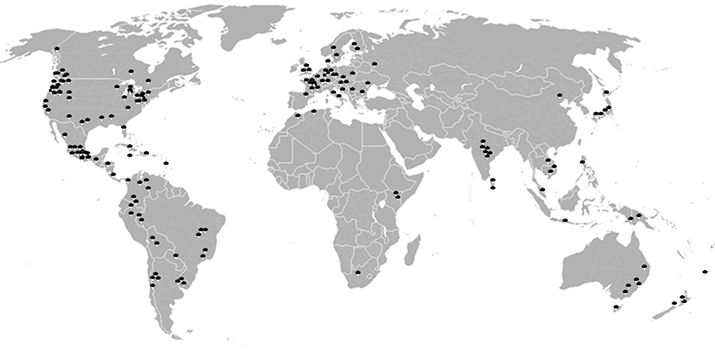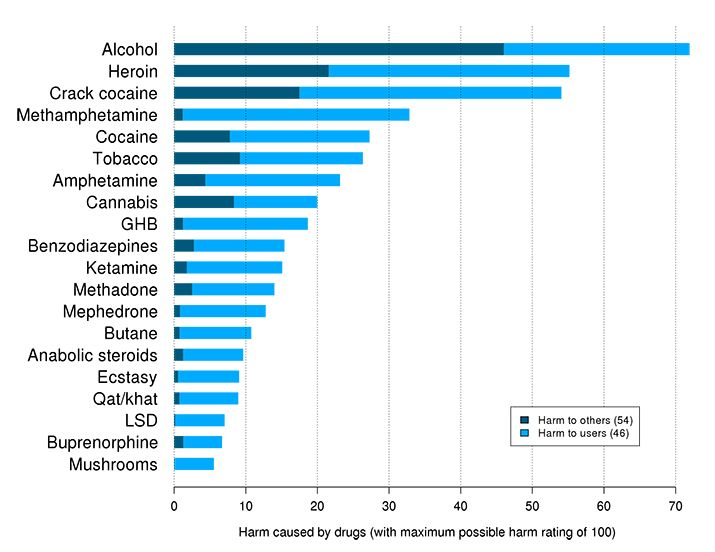

Defined by Wikipedia as:
Psilocybin mushrooms, commonly known as magic mushrooms or shrooms, are a polyphyletic, informal group of fungi that contain psilocybin and psilocin. Biological genera containing psilocybin mushrooms include Copelandia, Gymnopilus, Inocybe, Panaeolus, Pholiotina, Pluteus, and Psilocybe. Psilocybin mushrooms have been and continue to be used in indigenous New World cultures in religious, divinatory, or spiritual contexts. They may be depicted in Stone Age rock art in Africa and Europe, but are most famously represented in the Pre-Columbian sculptures and glyphs seen throughout Central and South America.
Present in varying concentrations in about 200 species of Basidiomycota mushrooms, psilocybin evolved from its ancestor, muscarine, some 10 to 20 million years ago. In a 2000 review on the worldwide distribution of psilocybin mushrooms, Gastón Guzmán and colleagues considered these distributed among the following genera: Psilocybe (116 species), Gymnopilus (14), Panaeolus (13), Copelandia (12), Hypholoma (6), Pluteus (6) Inocybe (6), Conocybe (4), Panaeolina (4), Gerronema (2), Agrocybe (1) and Galerina (1).[18] Guzmán increased his estimate of the number of psilocybin-containing Psilocybe to 144 species in a 2005 review.

Many of them are found in Mexico (53 species), with the remainder distributed throughout Canada and the US (22), Europe (16), Asia (15), Africa (4), and Australia and associated islands (19). Generally, psilocybin containing species are dark-spored, gilled mushrooms that grow in meadows and woods in the subtropics and tropics, usually in soils rich in humus and plant debris. Psilocybin mushrooms occur on all continents, but the majority of species are found in subtropical humid forests and along the lush Pacific coast. Psilocybe species commonly found in the tropics include P. cubensis and P. subcubensis. P. semilanceata, considered the world's most widely distributed psilocybin mushroom, is found in Europe, North America, Asia, South America, Australia and New Zealand, although it is absent from Mexico.
The effects of psilocybin mushrooms come from psilocybin and psilocin. When psilocybin is ingested, it is broken down by the liver in a process called dephosphorylation. The resulting compound is called psilocin, which is responsible for the psychedelic effects. Psilocybin and psilocin create short-term increases in tolerance of users, thus making it difficult to abuse them because the more often they are taken within a short period of time, the weaker the resultant effects are. Psilocybin mushrooms have not been known to cause physical or psychological dependence (addiction). The psychedelic effects tend to appear around 20 minutes after ingestion an can last up to 8 hours. Physical effects including nausea, vomiting, euphoria, muscle weakness or relaxation, drowsiness, and lack of coordination may occur.
As with many psychedelic substances, the effects of psychedelic mushrooms are subjective and can vary considerably among individual users. The mind-altering effects of psilocybin containing mushrooms typically last from three to eight hours depending on dosage, preparation method, and personal metabolism. The first 3–4 hours after ingestion are typically referred to as the 'peak'—in which the user experiences more vivid visuals and distortions in reality. The effects can seem to last much longer to the user because of psilocybin's ability to alter time perception.
Magic Mushrooms provided by ShroomTeam.ca are the safest available. See chart below of how magic mushrooms compare in safety to both the user and others.

Sensory effects include visual and auditory hallucinations followed by emotional changes and altered perception of time and space. Noticeable changes to the auditory, visual, and tactile senses may become apparent around 30 minutes to an hour after ingestion, although effects may take up to two hours to take place. These shifts in perception visually include enhancement and contrasting of colors, strange light phenomena (such as auras or "halos" around light sources), increased visual acuity, surfaces that seem to ripple, shimmer, or breathe; complex open and closed eye visuals of form constants or images, objects that warp, morph, or change solid colours; a sense of melting into the environment, and trails behind moving objects. Sounds may seem to have increased clarity—music, for example, can take on a profound sense of cadence and depth. Some users experience synesthesia, wherein they perceive, for example, a visualization of color upon hearing a particular sound.
As with other psychedelics such as LSD, the experience, or 'trip', is strongly dependent upon set and setting. Hilarity, depression, lack of concentration, and muscular relaxation (including dilated pupils) are all normal effects, sometimes in the same trip. A negative environment could contribute to a bad trip, whereas a comfortable and familiar environment would set the stage for a pleasant experience. Psychedelics make experiences more intense, so if a person enters a trip in an anxious state of mind, they will likely experience heightened anxiety on their trip. Many users find it preferable to ingest the mushrooms with friends or people who are familiar with 'tripping'. The psychological consequences of psilocybin use include hallucinations and an inability to discern fantasy from reality. Panic reactions and psychosis also may occur, particularly if a user ingests a large dose. In addition to the risks associated with ingestion of psilocybin, individuals who seek to use psilocybin mushrooms also risk poisoning if one of the many varieties of poisonous mushrooms is confused with a psilocybin mushroom.
A study at Johns Hopkins University found that a dose of 20 to 30 mg psilocybin per 70 kg occasioning mystical-type experiences brought lasting positive changes to traits including altruism, gratitude, forgiveness and feeling close to others when it was combined with meditation and an extensive spiritual practice support program. There is scientific evidence for a context and state-dependent causal effect of psychedelic use on connection with nature.
Dosage of mushrooms containing psilocybin depends on the psilocybin and psilocin content of the mushroom which can vary significantly between and within the same species, but is typically around 0.5–2.0% of the dried weight of the mushroom. A typical low dose of the common species Psilocybe cubensis is about 1.0 to 2.5 g, while about 2.5 to 5.0 g dried mushroom material is considered a strong dose. Above 5 g is often considered a heavy dose with 5.0 grams of dried mushroom often being referred to as a "heroic dose".
The concentration of active psilocybin mushroom compounds varies from species to species, but also from mushroom to mushroom within a given species, subspecies or variety. The same holds true for different parts of the same mushroom. In the species Psilocybe samuiensis, the dried cap of the mushroom contains the most psilocybin at about 0.23%–0.90%. The mycelium contains about 0.24%–0.32%.